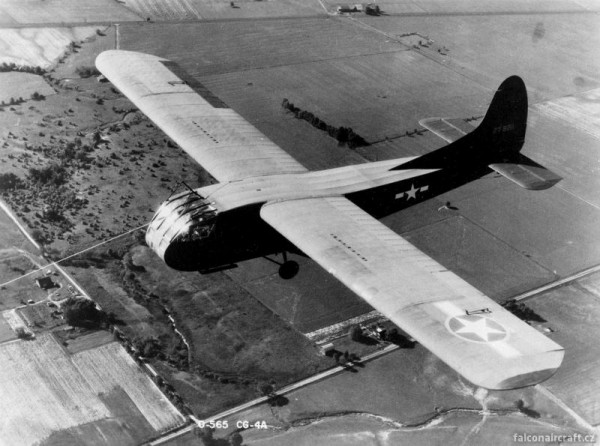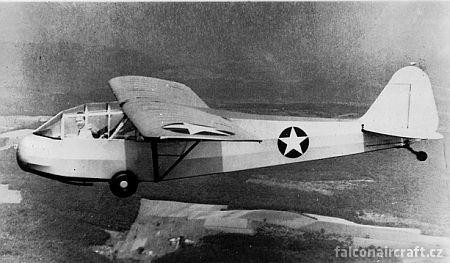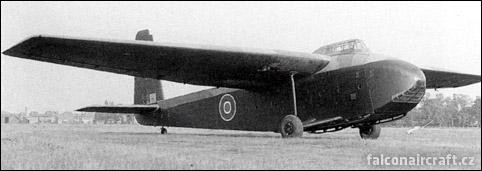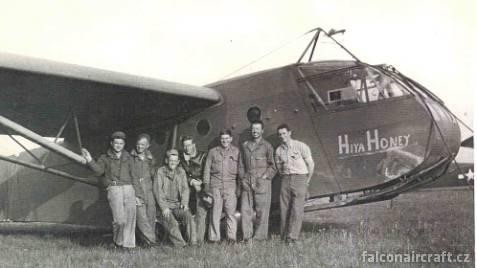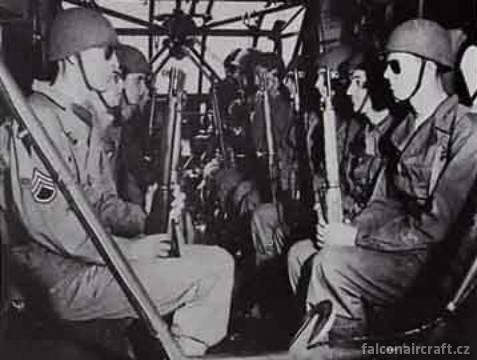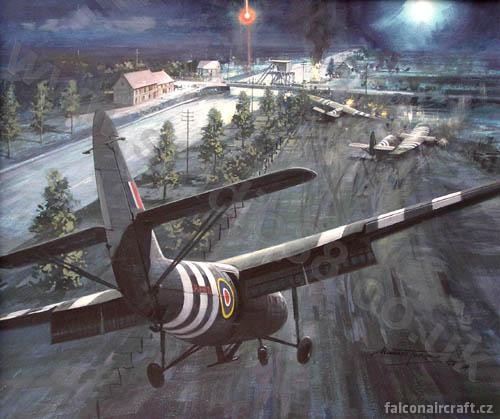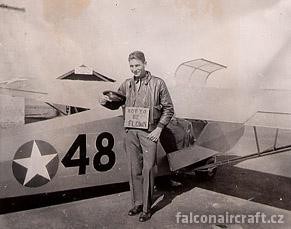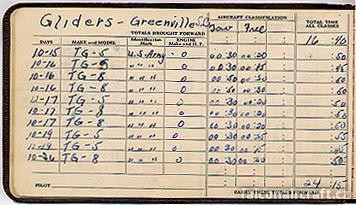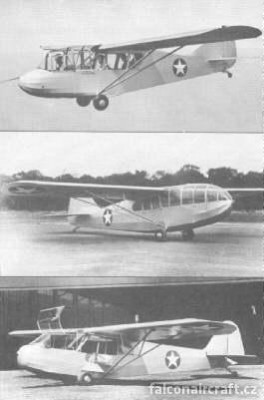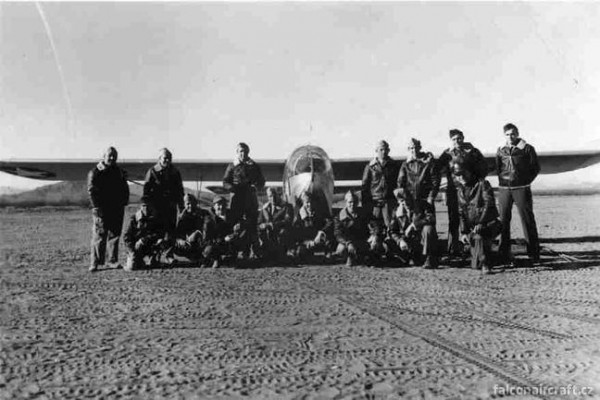Training glider Piper TG 8
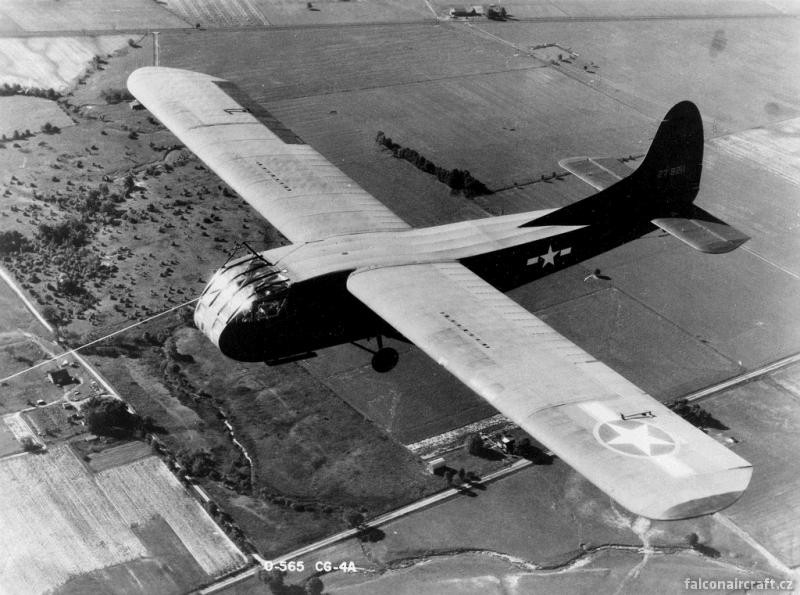 Date: 20.07.2015
Date: 20.07.2015
the year is 1942, the red army and the Soviet people heroically defend themselves against the German occupiers. Joseph Stalin is pushing the Allies to open a second front that would cause German forces to flow westward, relieving tired Russian defenders of their difficult daily task, fighting the enemy hard every inch of their country, but Winston Churchill will tell him for another two years: no, we are not ready, Josife… This will not change until June 6, 1944 in the so-called DAY - D
Transport and Airborne Gliders
Hundreds of transport and airborne glider pilots had to be trained for a successful invasion of Normandy. As a standard, the training was performed on civilian gliders taken over by the army, such as the Schweizer SGS 2-8. It turned out that these gliders were relatively good gliding performance, compared to the machines they will fly. For piloting transport heavy and box gliders such as Horsa, Hamilcar or Waco with a glider of about 10: 1, they needed another training machine that would be closer to the boxes with wings. So they came up with the idea to take a standard reconnaissance light two-seater aircraft - (Grasshoper) Piper L4, Aeronca, Tailorcraft, etc. During the training, they had the pilot take a normal takeoff, climb, turn off the engine and glide to land at a designated location… They soon realized that was not quite the case, because they could not train the glider pilots to take off behind the towing machine. In addition, the grasshoppers did not have brake flaps (spoilers) and equipment for flying at night. And so the idea was born in the heads of the commissioned officers, who were pressed for time and the need for new pilots of transport gliders, which they immediately implemented. They approached the main manufacturers of small reconnaissance aircraft (Piper, Aeronca, Tailorcraft) to quickly make a glider modification of their two-seater tandem aircraft, by placing a pilot instead of the engine. Another requirement was the addition of spoilers (brake flaps) and equipment for flying at night. The gliders will be sprayed with silver paint with standard U. S. characters. It worked, each of the companies received an order from the government for 250 pieces of these gliders, which these companies produced in the course of three months. And so it was achieved that the Air Force had in a short time available three-seater training gliders suitable for training pilots of transport and airborne gliders.
Because two pilots have been training at the same time, all the controls are there three times. The front pilot was a cadet who steered the glider and sweated a lot, so the front plate has 2 x flap, the second pilot was a cadet who learned from the mistakes of his front colleague and eventually took control. Third was the instructor, who was yelling at the two lemons in front of him about what to do and what they were doing wrong. But they trained them well, because these young sailors did their job. It is said that these boys were able to land at night on a coin thrown on the ground. It is difficult to write anything about the individuality of the pilots of transport and airborne gliders, consider for yourself, if they did not shoot them down on the way, then after switching off, they performed a night approach to enemy territory. They were responsible for the crew, the cargo, and if they survived the landing, they took a submachine gun and joined their fellow paratroopers to fight in the rear of the enemy. An example of their brilliant work is the airborne action in DEN-D… June 6, 1944, at half past one in the morning 6 Horsa gliders, carried on board 6 platoon paratroopers, led by Major John Howard, occupied key bridges over the Orne River and the Caen Canal. This action is known as Operation Deadstick. http://en.wikipedia.org/wiki/File:Pegasus_Bridge_1944.jpg The photo shows how brave gliders landed at night a short distance from the Pegasus Bridge over the Cayen Canal and the Germans were so surprised. Although it was not without its own losses, the Allies received two key bridges necessary for their further advance into the Normandy interior after landing on the beaches ...
Piper TG-8 (TG-Training Glider) is a modification of Piper L4, which is an army clone of the popular yellow Piper J3 Cub. The glider has exactly the same basic construction as its predecessors, but there are a few details that are different, yes it does not have the engine properly! The front pilot's seat was located in the engine compartment, the cabin glazing, tow rope hook, rudder pedals, aileron and elevator control lever, instrument panel and tow rope switch were added. The wing was given two folding brake flaps on the upper side, not that the glider needed it, it rubbed the air quite well, but it was for training reasons. The wheels of the chassis were placed on the underside of the fuselage on a common shaft and attached to simple calipers, without suspension. After the war, these gliders were no longer used and were sold as army surpluses. Many of them were converted to J3 / L4 motor Pipers.
There is currently no flying glider Piper TG-8 in the world! Our team, which has a gliding core, therefore decided to implement this modification using a damaged kite of war Piper L4 with a documented history. We will finance the project from our resources and with the help of sponsors. Although we have obtained the original production documentation for this modification from the manufacturer, we have the experience and taste, yet this project will be of a longer-term nature. We will inform you about the progress of the work at our stands.

